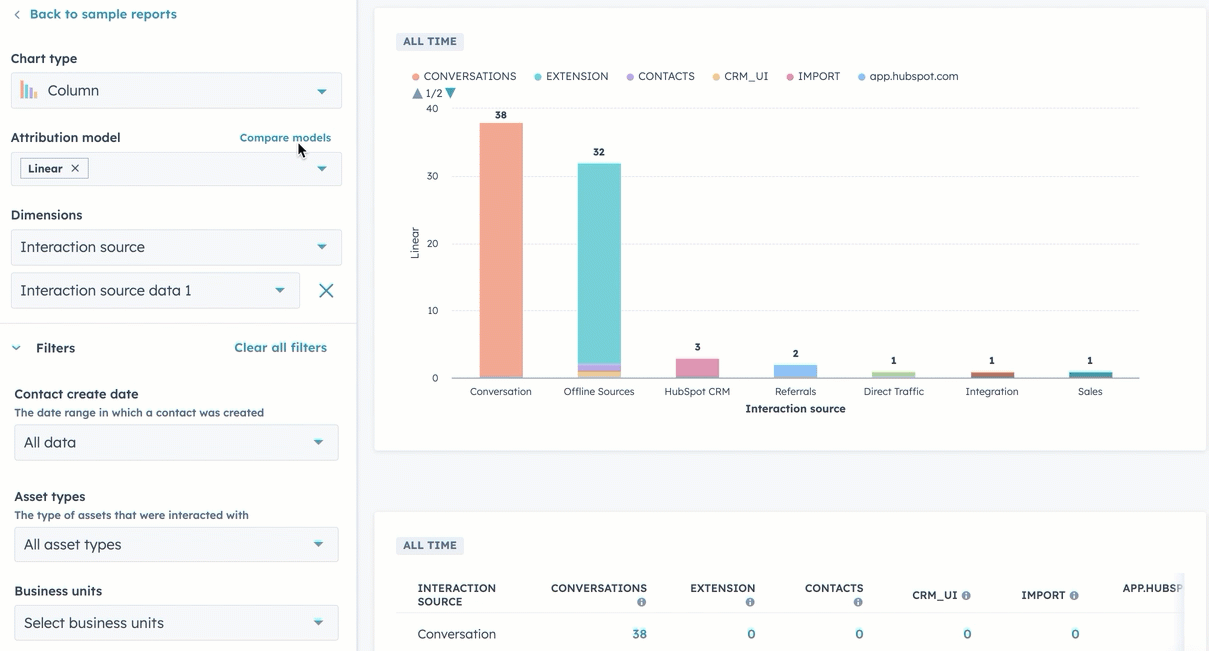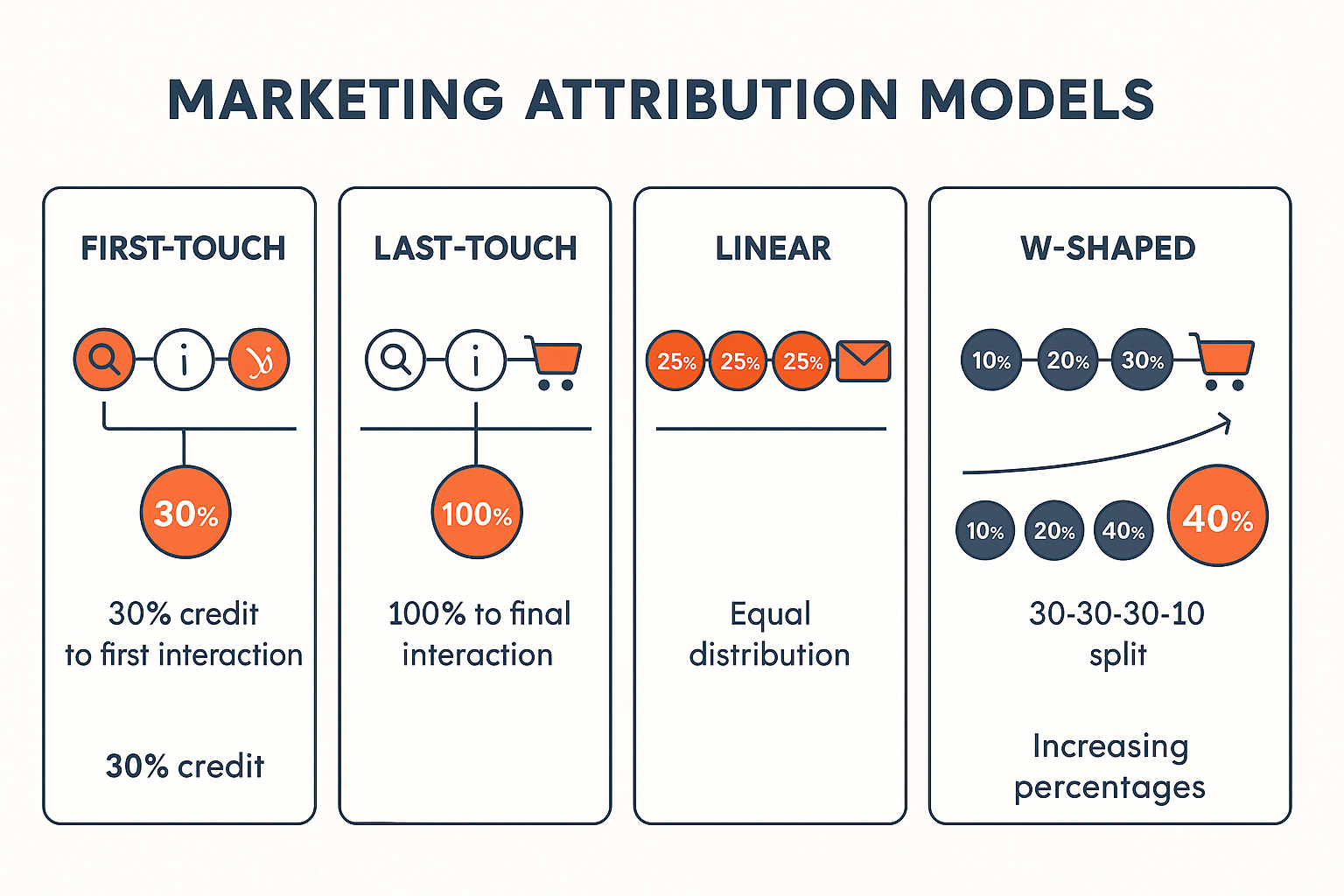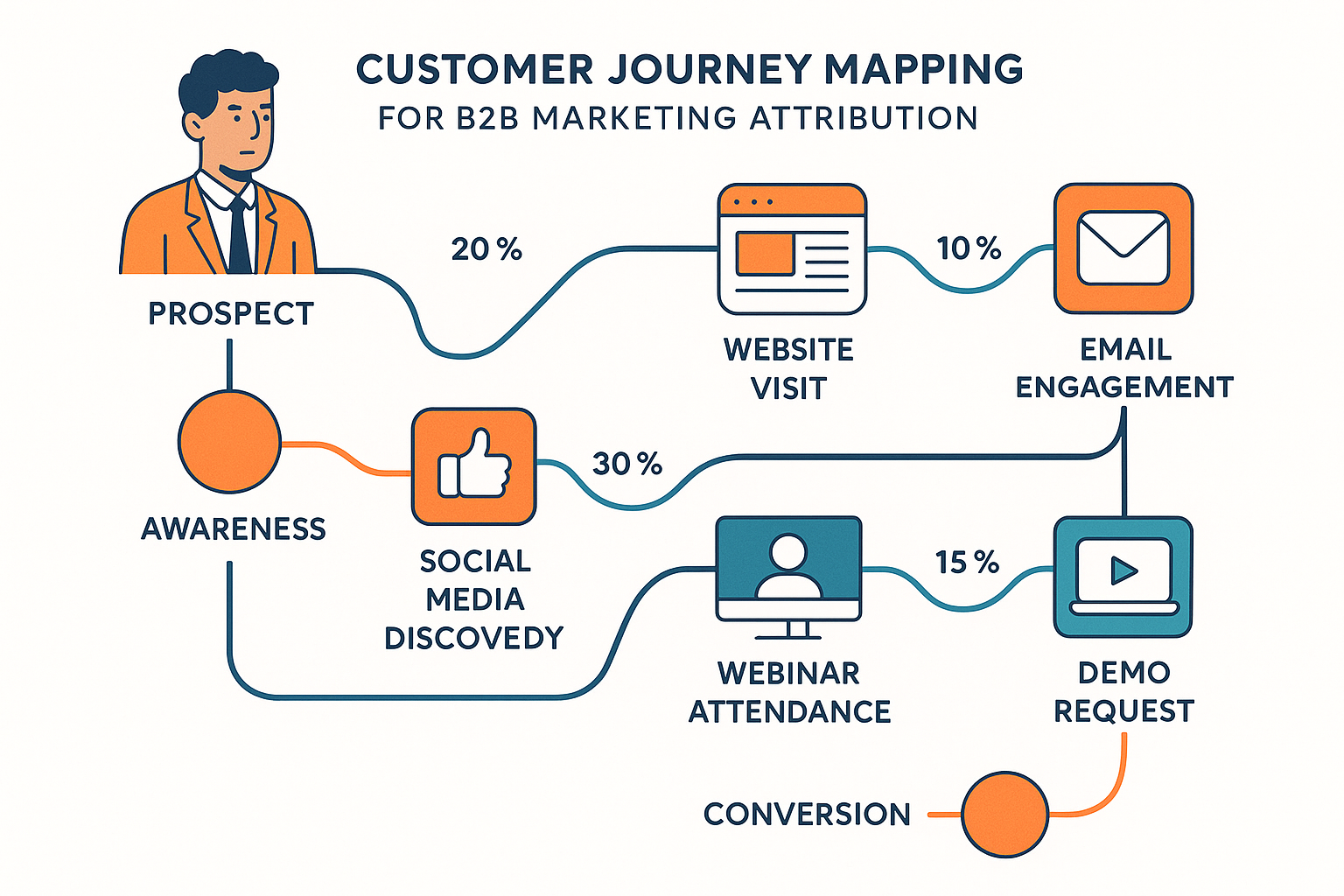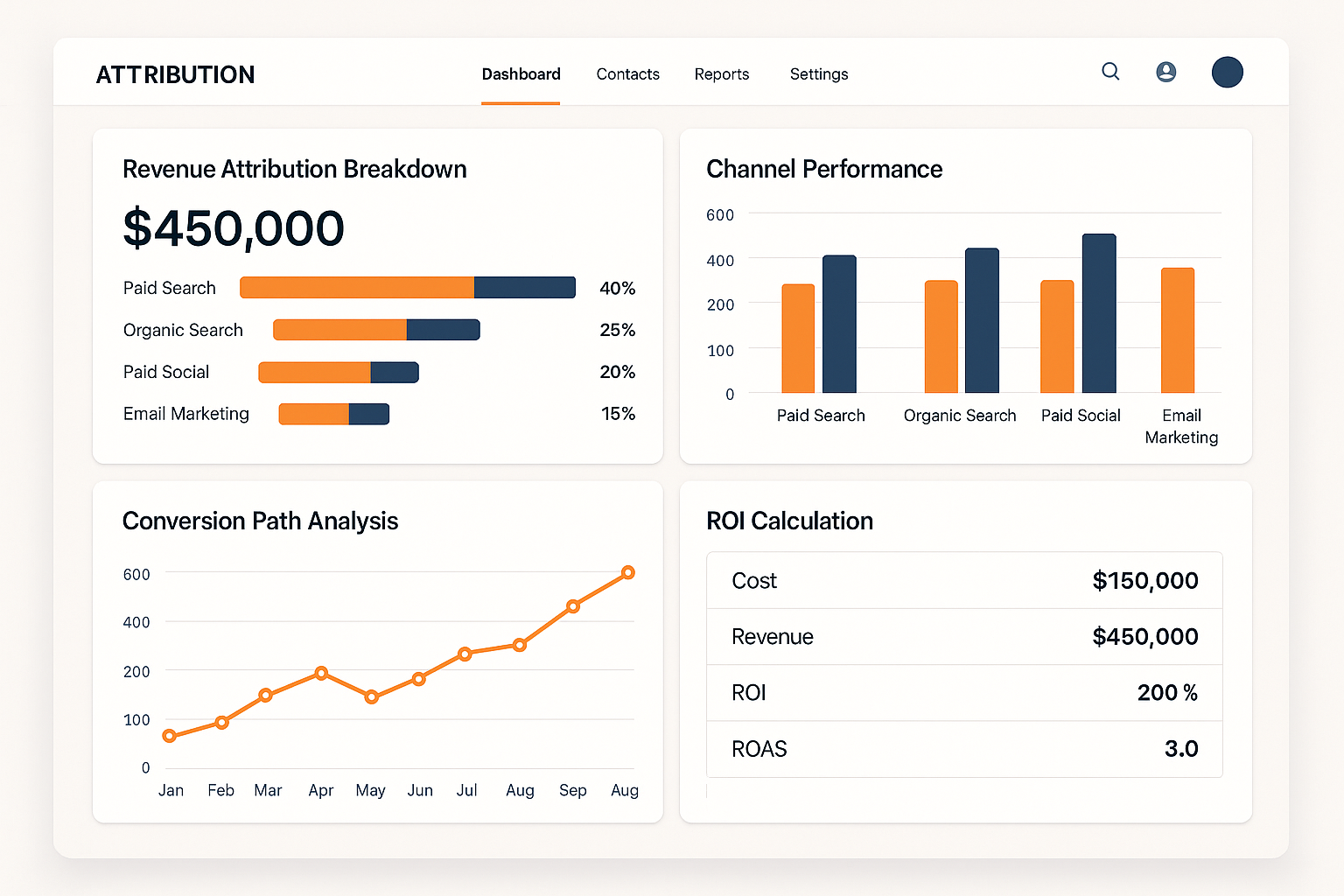HubSpot Campaign Attribution Explained: A Complete Guide to Marketing ROI and Revenue Tracking

In today's complex digital marketing landscape, understanding which campaigns, channels, and touchpoints drive actual revenue has become more critical than ever. HubSpot attribution reporting serves as the cornerstone for data-driven marketing decisions, enabling businesses to track the complete customer journey from initial awareness to final conversion. This comprehensive guide explores how attribution reporting hubspot capabilities can transform your marketing strategy and provide unprecedented insights into campaign performance.
Marketing attribution has evolved from a nice-to-have feature to an essential component of any successful marketing operation. With customers interacting across multiple channels before making a purchase decision, traditional last-click attribution models fall short of providing the complete picture. HubSpot's sophisticated attribution framework addresses this challenge by offering multiple attribution models hubspot supports, allowing marketers to understand the true impact of their efforts across the entire customer lifecycle.
The importance of hubspot revenue attribution cannot be overstated in an era where marketing budgets face increasing scrutiny and accountability. Organizations that implement comprehensive attribution strategies report significantly higher marketing ROI, better budget allocation decisions, and improved alignment between sales and marketing teams. Understanding what role can attribution play in your reporting strategy becomes fundamental to building a sustainable, scalable marketing operation that consistently delivers measurable business results.
Understanding HubSpot Attribution Fundamentals

HubSpot marketing ROI measurement begins with understanding the core principles of attribution reporting. At its essence, attribution is the process of assigning credit to various marketing touchpoints that contribute to a conversion or sale. Unlike traditional analytics that focus on isolated metrics, attribution provides a holistic view of how different marketing activities work together to drive business outcomes.
The foundation of effective attribution lies in comprehensive lead source tracking. HubSpot's platform automatically captures and records every interaction a prospect has with your brand, from the initial website visit triggered by a social media post to the final email that prompts a purchase decision. This granular tracking capability enables marketers to build detailed customer journey analytics that reveal the complex paths customers take before converting.
Multi-touch attribution represents a significant advancement over single-touch models that only credit the first or last interaction. In today's multi-channel environment, customers typically engage with brands across numerous touchpoints before making a purchase decision. A prospect might discover your company through a Google search, engage with content on social media, attend a webinar, download a whitepaper, and finally convert after receiving a targeted email campaign. Multi-touch attribution ensures that each of these interactions receives appropriate credit for contributing to the final conversion.
HubSpot's attribution capabilities extend beyond simple touchpoint tracking to include sophisticated conversion path analysis. This feature allows marketers to visualize the complete customer journey, identifying patterns and trends that inform strategic decision-making. By analyzing conversion paths, marketing teams can identify which combinations of touchpoints are most effective at driving conversions, enabling them to optimize their campaigns for maximum impact.
The platform's HubSpot analytics suite integrates attribution data with broader marketing metrics, providing a comprehensive view of campaign performance. This integration ensures that attribution insights don't exist in isolation but rather inform broader marketing strategies and tactical decisions. Marketers can correlate attribution data with metrics such as cost per acquisition, lifetime value, and customer retention rates to build a complete picture of marketing effectiveness.
The Strategic Role of Attribution in Modern Marketing

Understanding what role can attribution play in your reporting strategy requires examining how attribution data transforms marketing decision-making processes. Attribution reporting serves multiple strategic functions within an organization, from tactical campaign optimization to strategic budget allocation and long-term planning initiatives.
Sales and marketing alignment represents one of the most significant benefits of comprehensive attribution reporting. When both teams have access to detailed attribution data, they can collaborate more effectively on lead qualification, nurturing strategies, and conversion optimization. Sales teams gain insights into which marketing activities generate the highest-quality leads, while marketing teams understand which campaigns contribute most effectively to closed deals and revenue generation.
Attribution data enables HubSpot data-driven decisions across all levels of marketing operations. Rather than relying on intuition or incomplete data, marketing leaders can make strategic decisions based on comprehensive performance insights. This data-driven approach leads to more effective budget allocation, improved campaign targeting, and better resource utilization across marketing channels and activities.
Marketing channel performance analysis becomes significantly more sophisticated with proper attribution implementation. Traditional analytics might show that organic search generates the most website traffic, but attribution reporting reveals that social media interactions often play a crucial role in the conversion process, even if they don't receive last-click credit. This nuanced understanding enables marketers to optimize their channel mix for maximum effectiveness rather than focusing solely on channels that appear to drive direct conversions.
The strategic value of attribution extends to long-term planning and forecasting activities. By understanding which marketing activities drive the most valuable customers and highest lifetime value, organizations can make informed decisions about future marketing investments. Attribution data helps identify emerging trends, seasonal patterns, and changing customer behaviors that inform strategic planning processes.
HubSpot Attribution Models Explained

HubSpot offers several sophisticated attribution models, each designed to address different business needs and analytical requirements. Understanding the strengths and limitations of each model is crucial for implementing an effective attribution strategy that aligns with your organization's goals and customer journey characteristics.
First-Touch Attribution
First-touch attribution assigns 100% of the conversion credit to the initial touchpoint that brought a prospect into your marketing funnel. This model is particularly valuable for understanding brand awareness campaigns and top-of-funnel marketing activities. Organizations focused on building brand recognition and expanding their reach often find first-touch attribution provides valuable insights into which channels and campaigns are most effective at generating initial interest.
The primary advantage of first-touch attribution lies in its simplicity and clear focus on acquisition activities. Marketing teams can easily identify which campaigns, keywords, or channels are most effective at attracting new prospects to their brand. This information proves invaluable for budget allocation decisions related to awareness and acquisition campaigns.
However, first-touch attribution has significant limitations in complex B2B sales cycles where multiple touchpoints influence the final purchase decision. By crediting only the initial interaction, this model may undervalue nurturing campaigns, retargeting efforts, and bottom-of-funnel activities that play crucial roles in converting prospects into customers.
Last-Touch Attribution
Last-touch attribution represents the opposite approach, assigning full credit to the final touchpoint before conversion. This model provides clear insights into which campaigns and activities are most effective at closing deals and driving immediate conversions. Sales-focused organizations often prefer last-touch attribution because it directly correlates marketing activities with revenue generation.
Last-touch attribution excels at identifying high-converting campaigns and optimizing bottom-of-funnel activities. Marketing teams can quickly determine which email campaigns, landing pages, or promotional offers are most effective at driving immediate conversions. This information enables rapid optimization of conversion-focused campaigns and tactical adjustments to improve short-term performance.
The limitation of last-touch attribution becomes apparent in longer sales cycles where early-stage marketing activities play crucial roles in educating prospects and building trust. By ignoring all touchpoints except the final one, this model may lead to underinvestment in awareness and consideration-stage marketing activities that are essential for long-term growth.
Linear Attribution Model
The linear attribution model addresses the limitations of single-touch approaches by distributing conversion credit equally across all touchpoints in the customer journey. This model provides a more balanced view of marketing effectiveness, ensuring that every interaction receives recognition for its contribution to the final conversion.
Linear attribution works particularly well for organizations with relatively short sales cycles and consistent touchpoint patterns. By giving equal weight to all interactions, this model encourages investment across the entire marketing funnel and prevents the over-optimization of single touchpoints at the expense of overall customer experience.
The challenge with linear attribution lies in its assumption that all touchpoints contribute equally to conversion decisions. In reality, certain interactions often have disproportionate influence on purchase decisions. A product demo or pricing consultation typically carries more weight than a blog post view, but linear attribution treats them equally.
W-Shaped Attribution
W-shaped attribution represents HubSpot's most sophisticated multi-touch model, designed specifically for B2B organizations with complex sales cycles. This model assigns higher credit percentages to three critical touchpoints: first touch (30%), lead creation (30%), and opportunity creation (30%), with the remaining 10% distributed equally among other interactions.
W-shaped attribution recognizes that certain moments in the customer journey have disproportionate importance in driving conversions. The first touch represents initial brand awareness, lead creation indicates serious interest, and opportunity creation marks the transition from marketing-qualified to sales-qualified status. By emphasizing these critical moments, W-shaped attribution provides more accurate insights into marketing effectiveness across the entire funnel.
This model proves particularly valuable for organizations with longer sales cycles and multiple stakeholders involved in purchase decisions. B2B companies often find that W-shaped attribution provides the most actionable insights for optimizing their marketing mix and improving sales and marketing alignment.
Time Decay Attribution
Time decay attribution operates on the principle that touchpoints closer to the conversion event have greater influence on the purchase decision. This model assigns increasing credit percentages to more recent interactions, reflecting the reality that prospects' purchase intent typically increases as they progress through the sales funnel.
Time decay attribution works well for organizations where purchase decisions are heavily influenced by recent interactions and promotional activities. E-commerce companies and businesses with shorter consideration periods often find this model provides accurate insights into campaign effectiveness and optimal timing strategies.
The limitation of time decay attribution becomes apparent in industries where early-stage education and relationship-building activities play crucial roles in eventual conversions. By heavily weighting recent interactions, this model may undervalue important awareness and consideration-stage marketing efforts.
Implementing HubSpot Attribution Reporting
Successful implementation of HubSpot attribution reporting requires careful planning, proper setup, and adherence to HubSpot reporting best practices. The implementation process involves multiple technical and strategic considerations that determine the accuracy and usefulness of attribution data for decision-making purposes.
Technical Setup and Configuration
The foundation of effective attribution reporting begins with proper tracking implementation across all marketing channels and touchpoints. HubSpot's tracking code must be installed correctly on all website pages, landing pages, and digital properties to ensure comprehensive data collection. This includes implementing UTM parameter strategies for all external marketing campaigns, social media posts, and email marketing efforts.
Lead source tracking configuration requires establishing clear naming conventions and taxonomies for all marketing activities. Consistent campaign naming, source identification, and medium classification ensure that attribution data remains organized and actionable over time. Organizations should develop comprehensive documentation outlining their tracking standards and ensure all team members understand and follow these guidelines.
Integration with external marketing platforms represents a critical component of comprehensive attribution implementation. HubSpot's native integrations with Google Ads, Facebook Ads, LinkedIn, and other major advertising platforms enable automatic import of campaign data and cost information. These integrations ensure that attribution reports include complete performance metrics, including cost per acquisition and return on ad spend calculations.
Custom property creation and management enable organizations to track industry-specific or business-unique attribution factors. B2B companies might create custom properties to track account-based marketing activities, while e-commerce organizations might focus on product category or seasonal campaign attribution. Proper custom property implementation ensures that attribution reporting aligns with specific business requirements and strategic objectives.
Data Quality and Accuracy Considerations
Maintaining high-quality attribution data requires ongoing attention to data hygiene and validation processes. Regular audits of tracking implementation, UTM parameter usage, and integration functionality help identify and resolve data quality issues before they impact reporting accuracy. Organizations should establish monthly or quarterly data quality review processes to ensure attribution insights remain reliable and actionable.
Customer journey analytics accuracy depends heavily on proper contact and company record management within HubSpot. Duplicate contact records, incomplete company associations, and inconsistent data entry practices can significantly impact attribution accuracy. Implementing robust data management processes, including automated deduplication and data validation rules, ensures that attribution reports reflect actual customer behavior rather than data management issues.
Cross-device and cross-platform tracking presents ongoing challenges for attribution accuracy. While HubSpot provides sophisticated tracking capabilities, organizations must understand the limitations of cookie-based tracking and implement supplementary identification strategies where appropriate. This might include progressive profiling techniques, account-based identification methods, or integration with customer data platforms for enhanced cross-device tracking.
Organizational Alignment and Training
Successful attribution implementation extends beyond technical setup to include organizational change management and training initiatives. Sales and marketing alignment requires both teams to understand attribution concepts, interpret reporting data correctly, and use insights for collaborative decision-making. Regular training sessions and documentation help ensure that all stakeholders can effectively leverage attribution insights.
Establishing clear roles and responsibilities for attribution reporting management prevents data quality issues and ensures consistent interpretation of results. Organizations should designate attribution reporting champions within marketing and sales teams who take responsibility for data quality, report generation, and insight communication across the organization.
HubSpot data-driven decisions require cultural changes that emphasize evidence-based decision-making over intuition or traditional approaches. Leadership support and consistent reinforcement of data-driven practices help establish attribution reporting as a central component of marketing strategy and tactical execution.
Advanced Attribution Analysis and Optimization

Moving beyond basic attribution reporting, sophisticated organizations leverage advanced analytical techniques to extract deeper insights and drive continuous optimization of their marketing efforts. These advanced approaches require combining attribution data with additional business metrics and external data sources to create comprehensive performance insights.
Cohort Analysis and Attribution
Cohort analysis combined with attribution data provides powerful insights into how marketing effectiveness changes over time and across different customer segments. By analyzing attribution patterns for customers acquired in different time periods, organizations can identify trends in channel effectiveness, campaign performance, and customer journey evolution.
Seasonal cohort analysis reveals how attribution patterns change throughout the year, enabling more sophisticated budget allocation and campaign timing decisions. Organizations can identify which channels and campaigns perform best during different seasons, holidays, or business cycles, leading to more effective marketing calendar planning and resource allocation.
Customer value cohort analysis correlates attribution data with lifetime value, retention rates, and expansion revenue metrics. This analysis helps identify which marketing channels and campaigns attract the most valuable customers, enabling organizations to optimize their marketing mix for long-term profitability rather than short-term conversion volume.
Predictive Attribution Modeling
Advanced organizations leverage machine learning and predictive analytics to enhance traditional attribution models with forward-looking insights. Predictive attribution modeling uses historical attribution data combined with current customer behavior to forecast future conversion probabilities and optimal marketing interventions.
Propensity scoring models identify prospects most likely to convert based on their current attribution profile and engagement patterns. These models enable more sophisticated lead scoring, personalized marketing automation, and targeted sales outreach strategies that improve conversion rates and reduce customer acquisition costs.
Marketing channel performance optimization benefits significantly from predictive attribution insights. By understanding which channel combinations and touchpoint sequences are most likely to drive conversions, organizations can proactively optimize their marketing mix and campaign sequencing for maximum effectiveness.
Attribution-Based Budget Allocation
Sophisticated budget allocation strategies leverage attribution data to optimize marketing spend across channels, campaigns, and time periods. Rather than relying on traditional budget allocation methods, attribution-based approaches ensure that marketing investments align with actual performance and contribution to business outcomes.
Dynamic budget reallocation models use real-time attribution data to automatically adjust spending across marketing channels based on performance trends and conversion patterns. These models enable more responsive marketing operations that can quickly capitalize on high-performing opportunities while reducing investment in underperforming activities.
HubSpot marketing ROI optimization requires sophisticated attribution analysis that considers not only immediate conversion impact but also long-term customer value and retention effects. Organizations that implement comprehensive attribution-based budget allocation strategies typically achieve significantly higher marketing ROI and more efficient customer acquisition processes.
Measuring Success and Continuous Improvement
Establishing clear success metrics and continuous improvement processes ensures that hubspot revenue attribution initiatives deliver sustained value and evolving insights over time. Effective measurement strategies combine quantitative performance metrics with qualitative assessments of decision-making improvements and organizational alignment benefits.
Key Performance Indicators for Attribution Success
Conversion path analysis effectiveness can be measured through several key performance indicators that reflect both the accuracy of attribution data and its impact on business outcomes. Attribution model accuracy metrics include data completeness rates, tracking coverage percentages, and cross-channel identification success rates. These technical metrics ensure that attribution insights are based on comprehensive and reliable data.
Marketing efficiency improvements represent the most important success indicators for attribution initiatives. Organizations should track metrics such as cost per acquisition trends, marketing ROI improvements, and budget allocation effectiveness over time. Successful attribution implementation typically results in measurable improvements in these efficiency metrics as marketing teams make more informed decisions about channel mix and campaign optimization.
Sales and marketing alignment improvements can be measured through lead quality metrics, sales cycle length changes, and conversion rate improvements across the funnel. When attribution data successfully improves collaboration between sales and marketing teams, organizations typically see higher lead-to-opportunity conversion rates, shorter sales cycles, and improved customer acquisition efficiency.
Customer lifetime value optimization represents a longer-term success metric that reflects the strategic impact of attribution-driven decision-making. Organizations that successfully leverage attribution insights to optimize their marketing mix for customer value rather than just conversion volume typically achieve higher customer lifetime values, improved retention rates, and more sustainable growth patterns.
Continuous Optimization Strategies
HubSpot reporting best practices emphasize the importance of regular review and optimization cycles that ensure attribution insights remain relevant and actionable as business conditions change. Monthly attribution review processes should examine model performance, data quality metrics, and the effectiveness of attribution-driven decisions in achieving business objectives.
Quarterly attribution model evaluation helps organizations determine whether their chosen attribution approach continues to provide the most valuable insights for their specific business context. As customer behavior evolves, sales cycles change, or new marketing channels emerge, organizations may need to adjust their attribution models or implement hybrid approaches that better reflect current reality.
Annual attribution strategy reviews provide opportunities to assess the overall impact of attribution initiatives on business performance and identify areas for enhancement or expansion. These comprehensive reviews should examine both the technical aspects of attribution implementation and the organizational processes that leverage attribution insights for decision-making.
Marketing channel performance optimization requires ongoing experimentation and testing to identify new opportunities and validate attribution insights. Organizations should implement systematic testing programs that use attribution data to hypothesize about optimization opportunities and measure the results of strategic changes.
Future-Proofing Attribution Strategies
The evolving digital marketing landscape requires attribution strategies that can adapt to changing privacy regulations, new marketing channels, and emerging customer behaviors. Organizations should build flexibility into their attribution frameworks that enables rapid adaptation to new requirements and opportunities.
Privacy-first attribution approaches become increasingly important as third-party cookie deprecation and privacy regulations limit traditional tracking capabilities. Organizations should explore first-party data strategies, server-side tracking implementations, and privacy-compliant attribution methodologies that maintain insight quality while respecting customer privacy preferences.
Emerging channel integration represents an ongoing challenge and opportunity for attribution strategies. As new marketing channels and platforms emerge, organizations must quickly integrate these touchpoints into their attribution frameworks to maintain comprehensive customer journey visibility and accurate performance measurement.
Customer journey analytics evolution requires attribution strategies that can accommodate changing customer behaviors and expectations. The increasing complexity of B2B buying processes, the growing influence of dark social channels, and the rise of account-based marketing approaches all require sophisticated attribution frameworks that can adapt to these evolving realities.
Conclusion
HubSpot attribution reporting represents a fundamental shift from traditional marketing analytics toward comprehensive, customer-centric performance measurement that drives sustainable business growth. Organizations that successfully implement sophisticated attribution strategies gain unprecedented visibility into marketing effectiveness, enabling data-driven decisions that optimize both short-term performance and long-term customer value.
The strategic value of attribution reporting hubspot capabilities extends far beyond simple campaign measurement to encompass organizational transformation, improved collaboration, and enhanced customer experience optimization. When properly implemented and continuously optimized, attribution reporting becomes a competitive advantage that enables more efficient marketing operations, better customer acquisition strategies, and stronger alignment between marketing investments and business outcomes.
Understanding what role can attribution play in your reporting strategy requires recognizing that attribution is not merely a reporting tool but a strategic framework for marketing optimization and business growth. The most successful organizations treat attribution as an ongoing capability that evolves with their business needs, customer behaviors, and market conditions.
The future of marketing attribution lies in increasingly sophisticated approaches that combine traditional touchpoint tracking with predictive analytics, customer value optimization, and privacy-first methodologies. Organizations that invest in building robust attribution capabilities today position themselves for sustained success in an increasingly complex and competitive digital marketing landscape.
HubSpot marketing ROI optimization through comprehensive attribution reporting enables organizations to achieve their growth objectives more efficiently while building stronger customer relationships and more sustainable competitive advantages. The investment in proper attribution implementation and optimization pays dividends through improved marketing effectiveness, better resource allocation, and enhanced organizational alignment around customer-centric growth strategies.
As the digital marketing landscape continues to evolve, the organizations that thrive will be those that leverage sophisticated attribution insights to make informed decisions, optimize customer experiences, and build sustainable growth engines that adapt to changing market conditions while consistently delivering measurable business value.
This comprehensive guide to HubSpot Campaign Attribution provides the foundation for implementing effective attribution strategies that drive measurable business results. For organizations ready to transform their marketing measurement and optimization capabilities, HubSpot's attribution reporting features offer the tools and insights necessary to achieve sustained competitive advantage in today's complex digital marketplace.


